Key Points
-
NEET is an acronym referring to young people “not in education, employment or training.”
-
While NEET rates have fallen since cresting in 2020, dozens of countries have reported rises in the share of youth not employed or in education.
-
The countries where NEET rates are rising fastest include conflict-torn states in the Middle East, middle-income countries with weak labor markets, and several wealthy, advanced economies.
-
A secure financial future starts with sound planning today. Click here to talk to an expert.
The acronym NEET refers to young people “not in education, employment or training.” While the term NEET has come to be associated with modern dropout culture and feelings of discouragement common amongst Gen Z, NEET cohorts also encompass young people who are actively looking for employment and educational opportunities, and can reflect broad systemic economic issues.
The share of young people not in education, employment or training crested globally in 2020, when pandemic lockdowns shuttered schools, slowed hiring, and forced millions of young people out of both classrooms and workplaces. While the NEET rate has since fallen well below pre-COVID levels, dozens of countries have reported net increases in the share of unengaged young people over the past five years.
The countries where NEET rates are rising the most represent a diverse mix of economic structures and challenges. In conflict-torn nations like Afghanistan, Syria, and Sudan, violence and instability have forced young people out of schools and jobs, driving NEET rates to some of the highest in the world. In middle-income economies such as Peru, Pakistan, and the Dominican Republic, weak labor markets and slowing growth have left youth unable to transition into stable work. Many wealthier, advanced economies — like Austria, Luxembourg, and the United States — have also seen NEET rates go up, likely as a result of rising housing costs, skills mismatches, and policy gaps that exclude Gen Z from stable employment and educational opportunities. A closer look at the data reveals the countries where NEET rates are rising the fastest.
To determine the countries where NEET rates are rising the fastest, 24/7 Wall St. reviewed historical data on youth unemployment and education from the International Labour Organization. Countries were ranked based on the change in the percentage of youth ages 15 to 24 not in education, employment or training from 2019 to 2024. Supplemental data on unemployment among advanced degree holders are also from the ILO. Data on GDP is from the World Bank.
44. China
- Change in NEET rate, 2019 to 2024: +0.8 percentage points
- Share of youth not in education, employment or training, 2024: 11.6%
- Share of youth not in education, employment or training, 2019: 10.8%
- Unemployment among advanced degree holders: 3.8%
- Gross domestic product: $18.7 trillion ($13,303 per capita)
- Largest urban areas: Guangzhou, Shanghai, Jieyang, Chongqing, Hong Kong, Beijing, Wuhan, Suzhou, Chengdu, Shenyang
43. Israel

- Change in NEET rate, 2019 to 2024: +0.8 percentage points
- Share of youth not in education, employment or training, 2024: 15.1%
- Share of youth not in education, employment or training, 2019: 14.3%
- Unemployment among advanced degree holders: 2.4%
- Gross domestic product: $540.4 billion ($54,177 per capita)
- Largest urban areas: Tel Aviv, Haifa, Beer Sheva, Ashdod, Nazareth, Netanya, Modi’In Illit, Ashkelon, Qiryat Ata, Eilat
42. United States

- Change in NEET rate, 2019 to 2024: +0.8 percentage points
- Share of youth not in education, employment or training, 2024: 11.2%
- Share of youth not in education, employment or training, 2019: 10.4%
- Unemployment among advanced degree holders: 2.4%
- Gross domestic product: $29.2 trillion ($85,810 per capita)
- Largest urban areas: New York, Los Angeles, Chicago, Detroit, Miami, Dallas, San Jose, San Diego, Houston, Washington D.C.
41. Sao Tome and Principe

- Change in NEET rate, 2019 to 2024: +0.8 percentage points
- Share of youth not in education, employment or training, 2024: 49.8%
- Share of youth not in education, employment or training, 2019: 49.0%
- Unemployment among advanced degree holders: 0.0%
- Gross domestic product: $764.3 million ($3,245 per capita)
- Largest urban areas: Sío Tomé, Santo António, Passadeira
40. Indonesia

- Change in NEET rate, 2019 to 2024: +0.8 percentage points
- Share of youth not in education, employment or training, 2024: 21.4%
- Share of youth not in education, employment or training, 2019: 20.5%
- Unemployment among advanced degree holders: 3.6%
- Gross domestic product: $1.4 trillion ($4,925 per capita)
- Largest urban areas: Jakarta, Surabaya, Yogyakarta, Bandung, Medan, Semarang, Tegal, Palembang, Tasikmalaya, Pati
39. Solomon Islands

- Change in NEET rate, 2019 to 2024: +0.9 percentage points
- Share of youth not in education, employment or training, 2024: 8.2%
- Share of youth not in education, employment or training, 2019: 7.3%
- Unemployment among advanced degree holders: 0.5%
- Gross domestic product: $1.8 billion ($2,149 per capita)
- Largest urban areas: Honiara, Auki
38. Dominican Republic
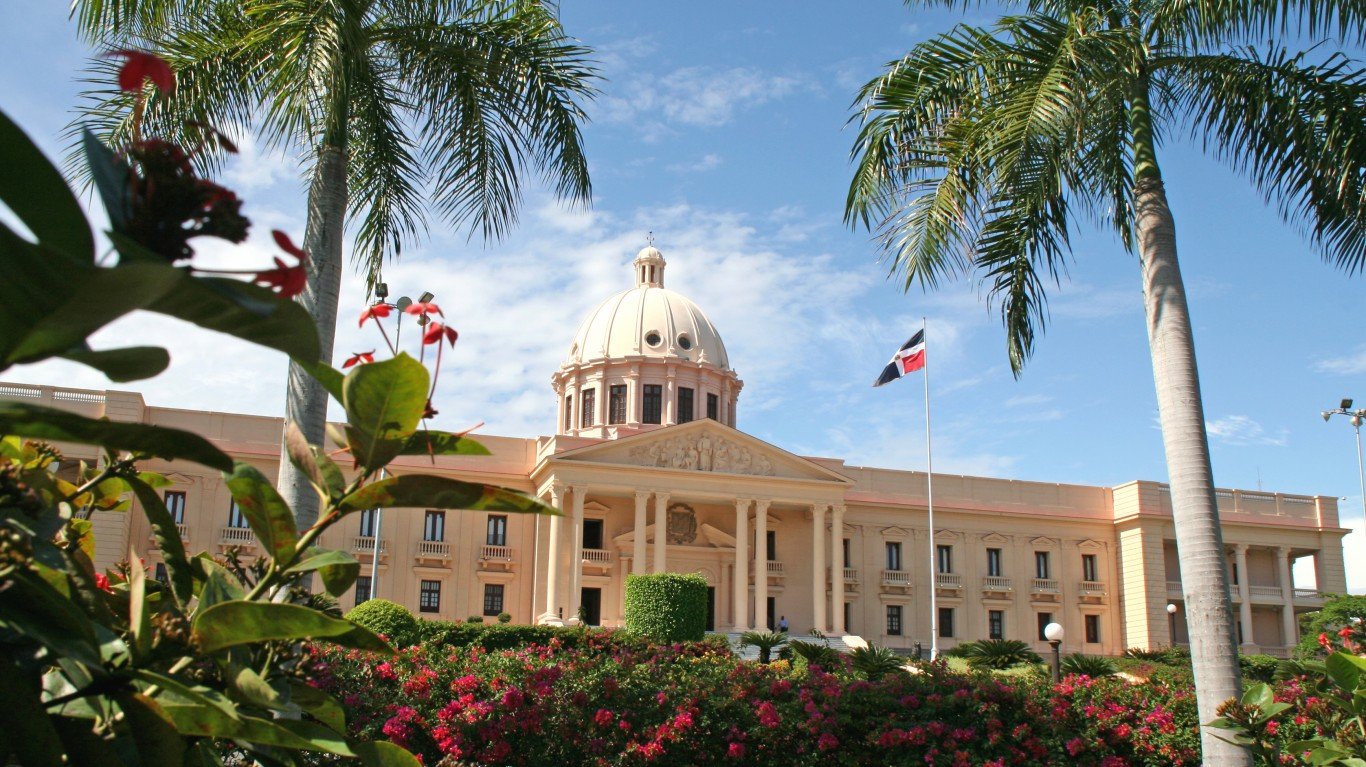
- Change in NEET rate, 2019 to 2024: +0.9 percentage points
- Share of youth not in education, employment or training, 2024: 25.7%
- Share of youth not in education, employment or training, 2019: 24.7%
- Unemployment among advanced degree holders: 5.7%
- Gross domestic product: $124.3 billion ($10,876 per capita)
- Largest urban areas: Santo Domingo, Santiago De Los Caballeros, San Cristóbal, La Vega, Puerto Plata, La Romana, Las Matas De Santa Cruz, San Juan De La Maguana, San Francisco De Macoris, Bonao
37. Cambodia
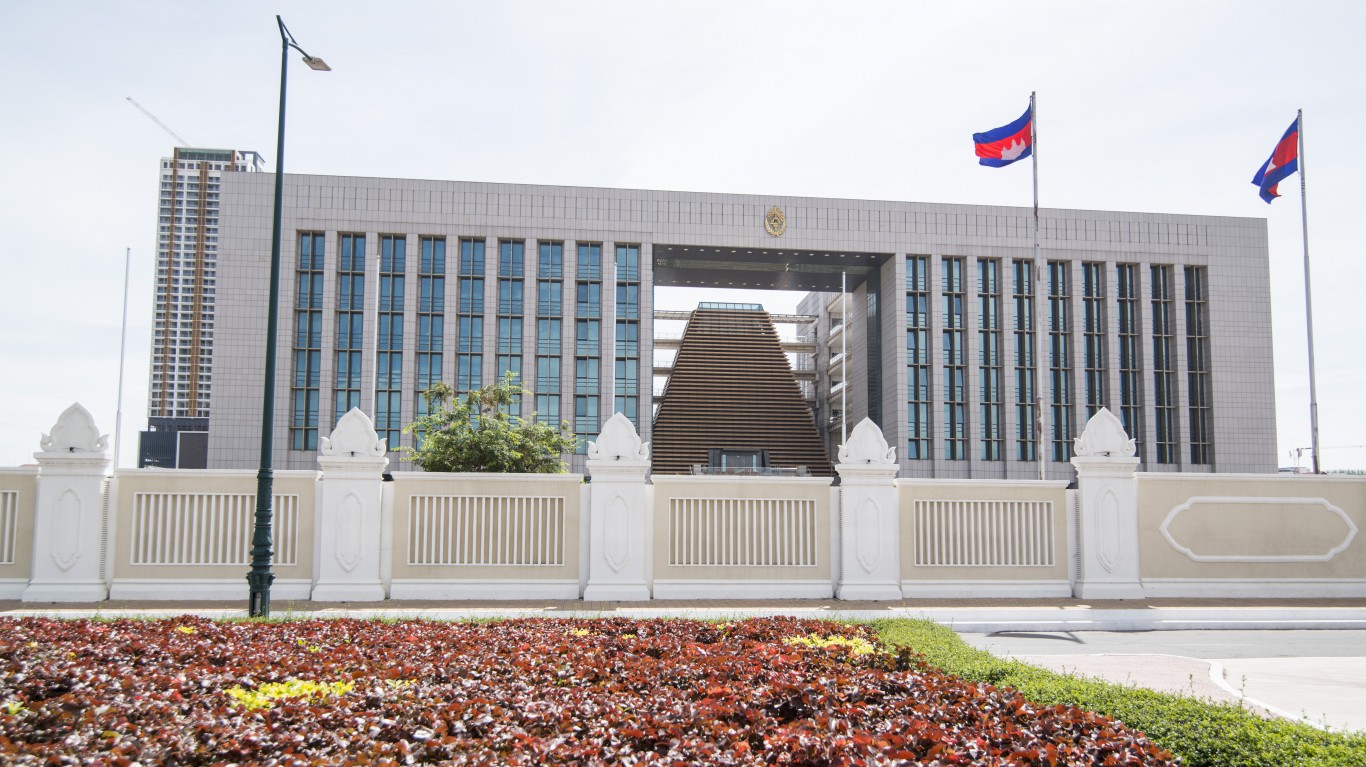
- Change in NEET rate, 2019 to 2024: +1.0 percentage points
- Share of youth not in education, employment or training, 2024: 12.4%
- Share of youth not in education, employment or training, 2019: 11.4%
- Unemployment among advanced degree holders: 1.0%
- Gross domestic product: $46.4 billion ($2,628 per capita)
- Largest urban areas: Phnom Penh, Battambang, Sisophon, Kampong Chhnang, Neak Loeung, Kampot, Khemara Phoumin, Pursat, Sihanoukville, Siem Reap
36. Ecuador

- Change in NEET rate, 2019 to 2024: +1.1 percentage points
- Share of youth not in education, employment or training, 2024: 18.6%
- Share of youth not in education, employment or training, 2019: 17.5%
- Unemployment among advanced degree holders: 5.5%
- Gross domestic product: $124.7 billion ($6,875 per capita)
- Largest urban areas: Guayaquil, Quito, Cuenca, Manta, Machala, Ambato, City Of Loja, Portoviejo, Riobamba, Quevedo
35. Equatorial Guinea

- Change in NEET rate, 2019 to 2024: +1.2 percentage points
- Share of youth not in education, employment or training, 2024: 24.5%
- Share of youth not in education, employment or training, 2019: 23.3%
- Unemployment among advanced degree holders: 0.0%
- Gross domestic product: $12.8 billion ($6,745 per capita)
- Largest urban areas: Bata, Malabo, Niefang, Ebebiyín, Aconibe, Micomeseng, Añisoc, Nsork, Moca, Mongomo
34. Samoa

- Change in NEET rate, 2019 to 2024: +1.3 percentage points
- Share of youth not in education, employment or training, 2024: 30.3%
- Share of youth not in education, employment or training, 2019: 29.0%
- Unemployment among advanced degree holders: 3.2%
- Gross domestic product: $1.1 billion ($4,899 per capita)
- Largest urban areas: Apia, Puipa’A, Faleasiu, Vaiusu
33. Syria
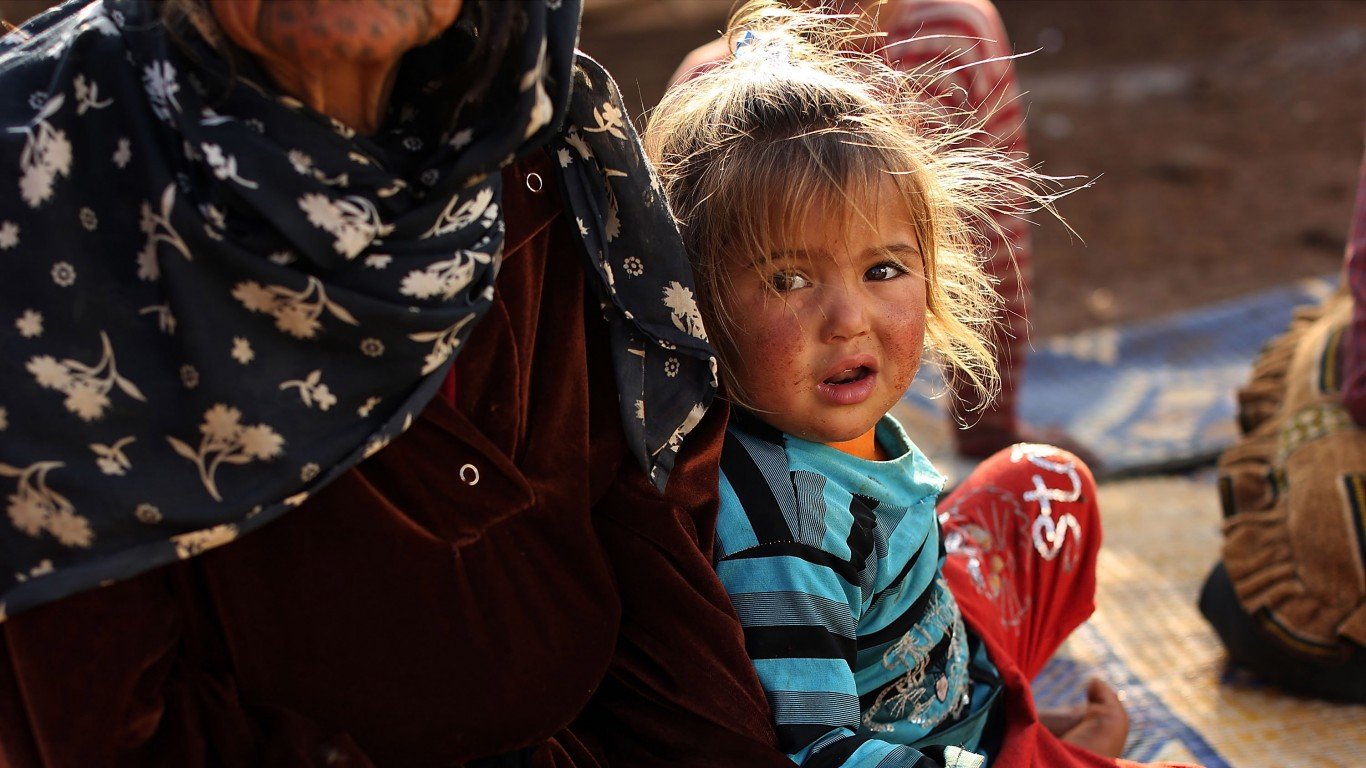
- Change in NEET rate, 2019 to 2024: +1.4 percentage points
- Share of youth not in education, employment or training, 2024: 38.8%
- Share of youth not in education, employment or training, 2019: 37.4%
- Unemployment among advanced degree holders: 0.0%
- Gross domestic product: $20.0 billion ($847 per capita)
- Largest urban areas: Damascus, Aleppo, Homs, Latakia, Hama, Qamishli, Ar Raqqah, Al-Hasakah, Tartus, Manbij
32. Myanmar

- Change in NEET rate, 2019 to 2024: +1.5 percentage points
- Share of youth not in education, employment or training, 2024: 15.2%
- Share of youth not in education, employment or training, 2019: 13.8%
- Unemployment among advanced degree holders: 0.8%
- Gross domestic product: $74.1 billion ($1,359 per capita)
- Largest urban areas: Naypyidaw, Tatkon, Lewe, Ywa Htauk Village, Naypyidaw, Set Yon Su
31. South Africa
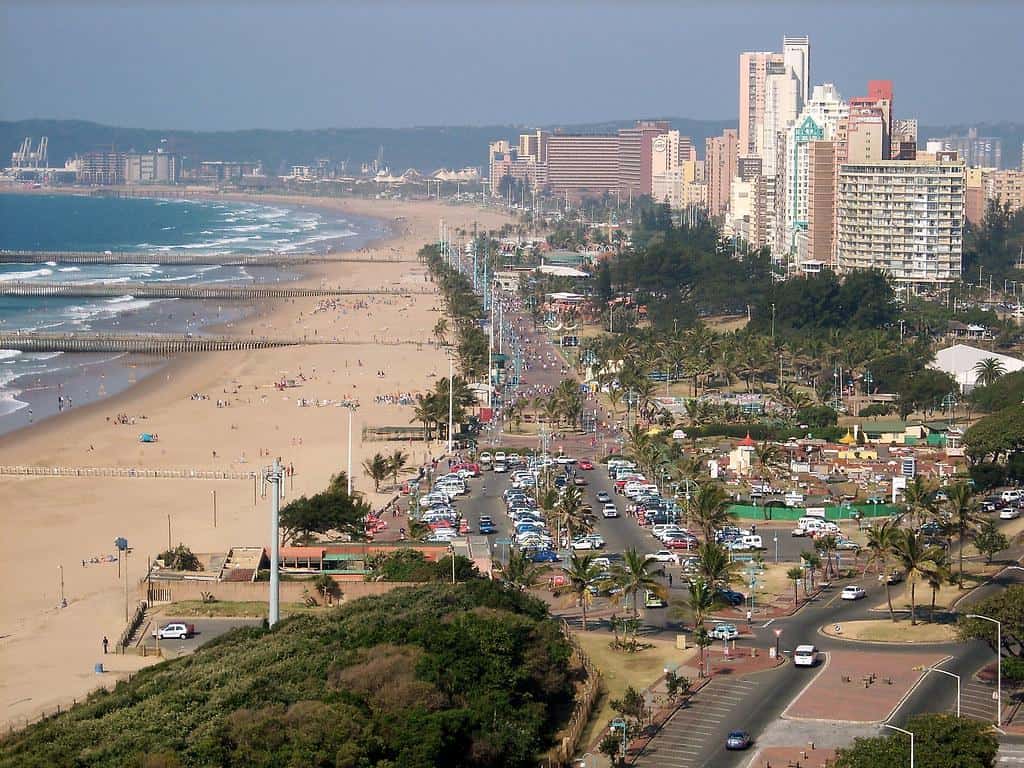
- Change in NEET rate, 2019 to 2024: +1.5 percentage points
- Share of youth not in education, employment or training, 2024: 33.9%
- Share of youth not in education, employment or training, 2019: 32.5%
- Unemployment among advanced degree holders: 15.1%
- Gross domestic product: $400.3 billion ($6,253 per capita)
- Largest urban areas: Johannesburg, Durban, Cape Town, Pretoria, Port Elizabeth, Evaton, Klipgat, Phuthaditjhaba, Bloemfontein, Edendale
30. Lebanon
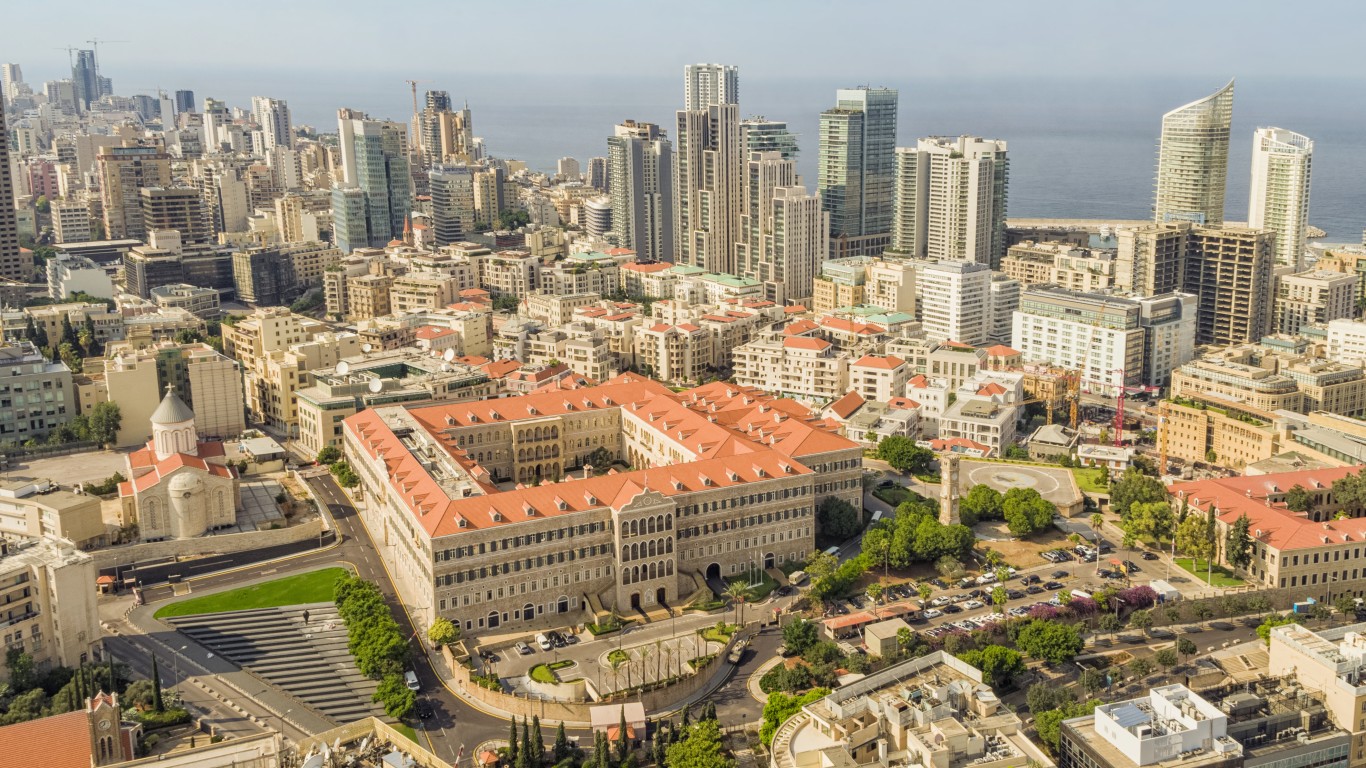
- Change in NEET rate, 2019 to 2024: +1.5 percentage points
- Share of youth not in education, employment or training, 2024: 25.0%
- Share of youth not in education, employment or training, 2019: 23.5%
- Unemployment among advanced degree holders: 14.5%
- Gross domestic product: $20.1 billion ($3,478 per capita)
- Largest urban areas: Beirut, Tripoli, Saida, Zouk Bhanine, Zahlé, Memneh, Bezbina, Tyre, Halba, Baalbek
29. Democratic Republic of Congo
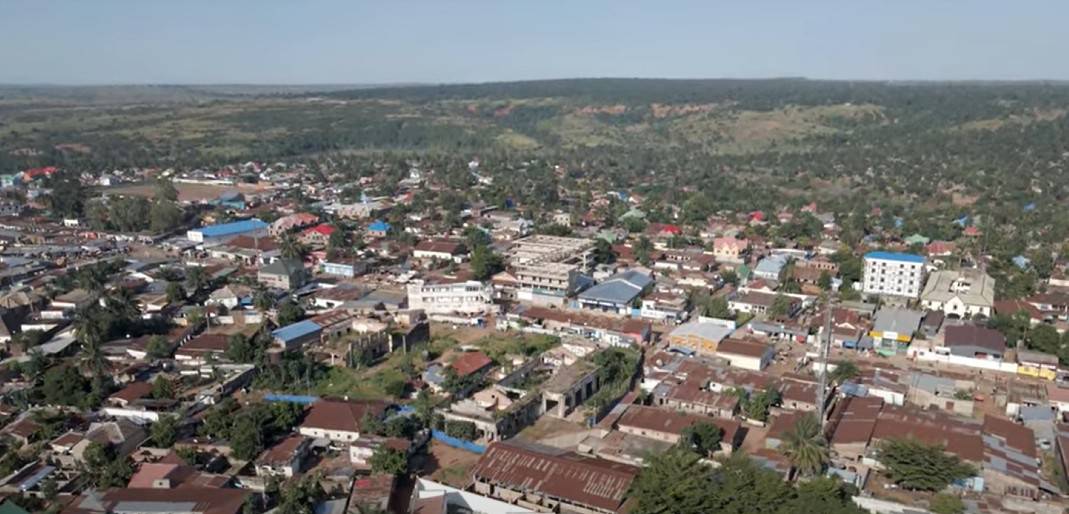
- Change in NEET rate, 2019 to 2024: +1.6 percentage points
- Share of youth not in education, employment or training, 2024: 31.5%
- Share of youth not in education, employment or training, 2019: 29.9%
- Unemployment among advanced degree holders: 5.5%
- Gross domestic product: $70.7 billion ($647 per capita)
- Largest urban areas: Kinshasa, Mbuji-Mayi, Beni, Bukavu, Boma, Kikwit, Goma, Matadi, Mongbwalu, Bunia
28. Bangladesh
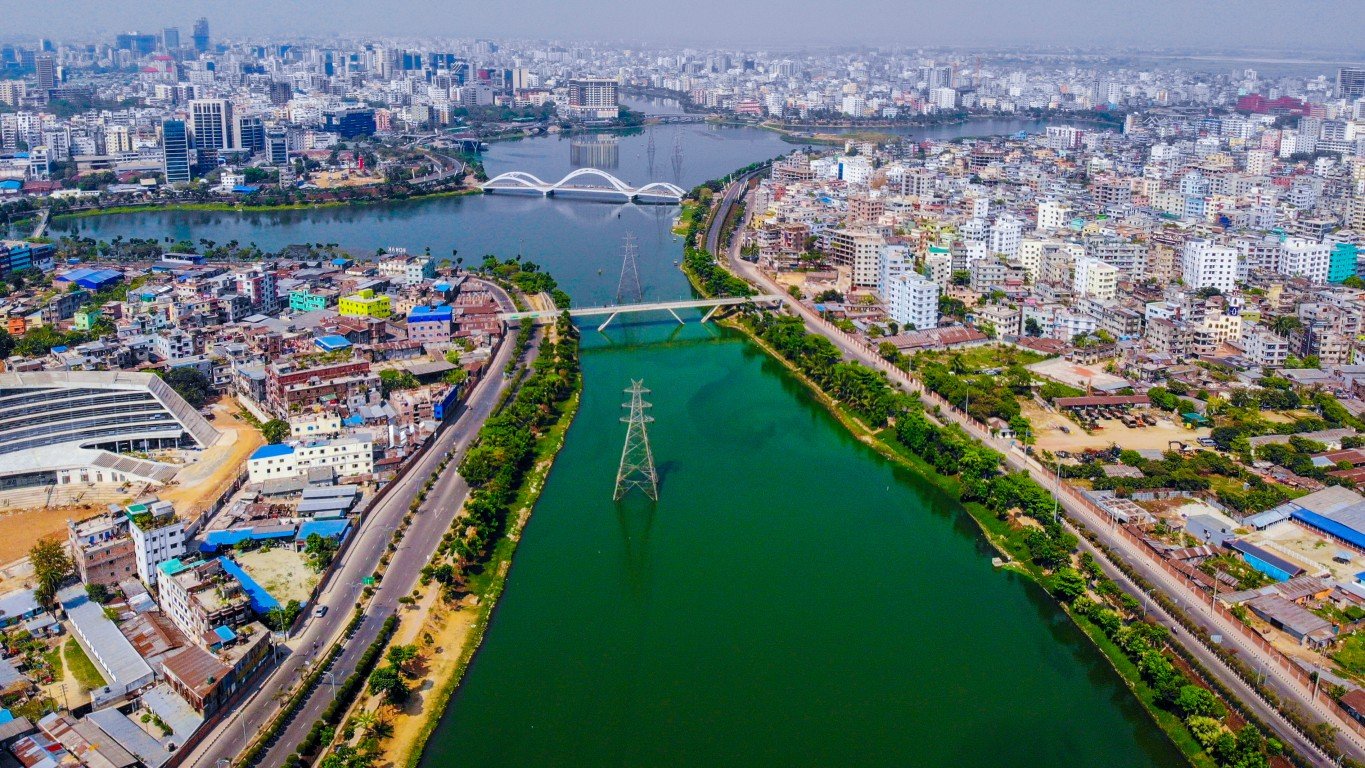
- Change in NEET rate, 2019 to 2024: +1.7 percentage points
- Share of youth not in education, employment or training, 2024: 30.0%
- Share of youth not in education, employment or training, 2019: 28.3%
- Unemployment among advanced degree holders: 11.8%
- Gross domestic product: $450.1 billion ($2,593 per capita)
- Largest urban areas: Dhaka, Comilla, Chattogram, Khulna, Sirajganj, Brahmanbaria, Noakhali, Bogura, Tangail, Rangpur
27. Estonia
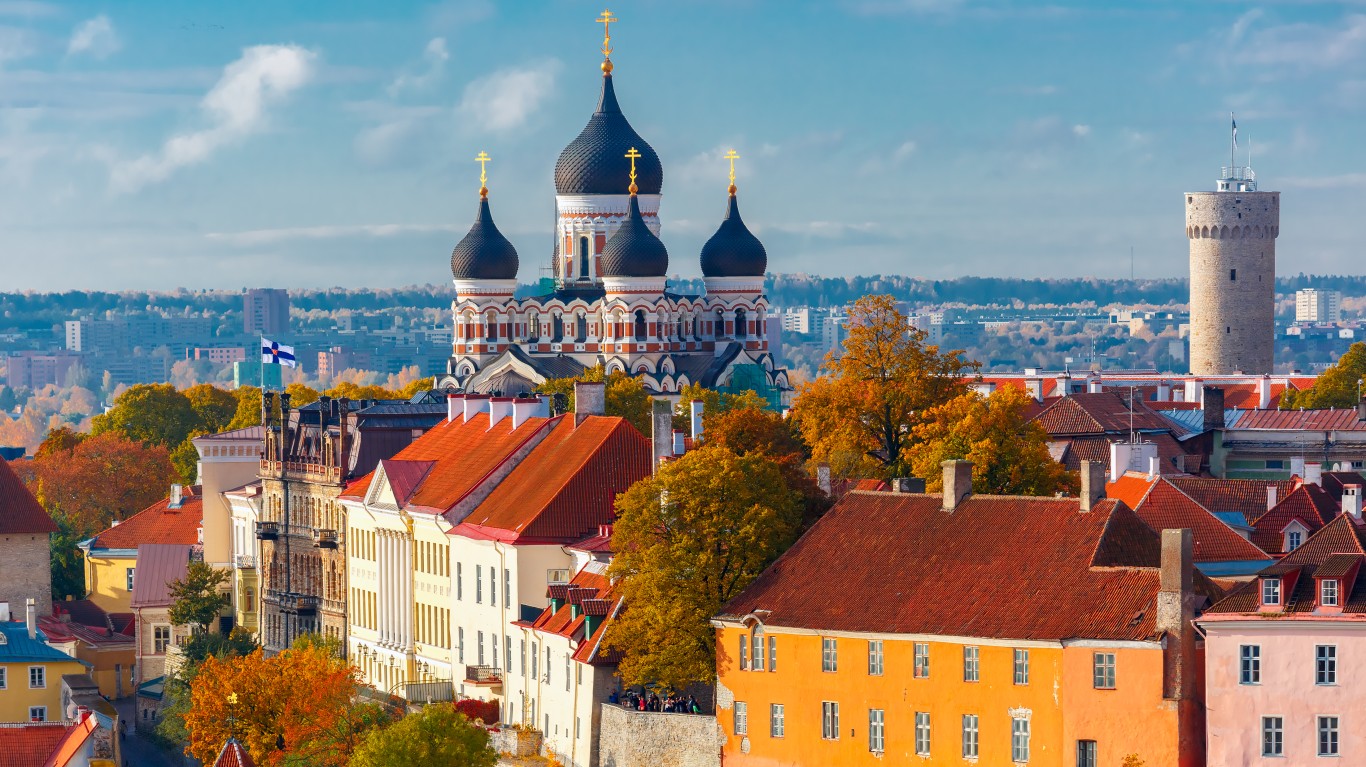
- Change in NEET rate, 2019 to 2024: +1.7 percentage points
- Share of youth not in education, employment or training, 2024: 9.6%
- Share of youth not in education, employment or training, 2019: 7.9%
- Unemployment among advanced degree holders: 3.6%
- Gross domestic product: $42.8 billion ($31,170 per capita)
- Largest urban areas: Kohtla-Järve, Tallinn, Narva, Tartu, Pärnu, Sillamäe, Valga, Viljandi, Haapsalu, Paide
26. Lithuania

- Change in NEET rate, 2019 to 2024: +1.8 percentage points
- Share of youth not in education, employment or training, 2024: 10.4%
- Share of youth not in education, employment or training, 2019: 8.6%
- Unemployment among advanced degree holders: 3.8%
- Gross domestic product: $84.9 billion ($29,386 per capita)
- Largest urban areas: Kaunas, Vilnius, Klaipėda, Panevėžys, Šiauliai, Alytus, Marijampolė, Telšiai, Utena, Visaginas
25. Timor-Leste
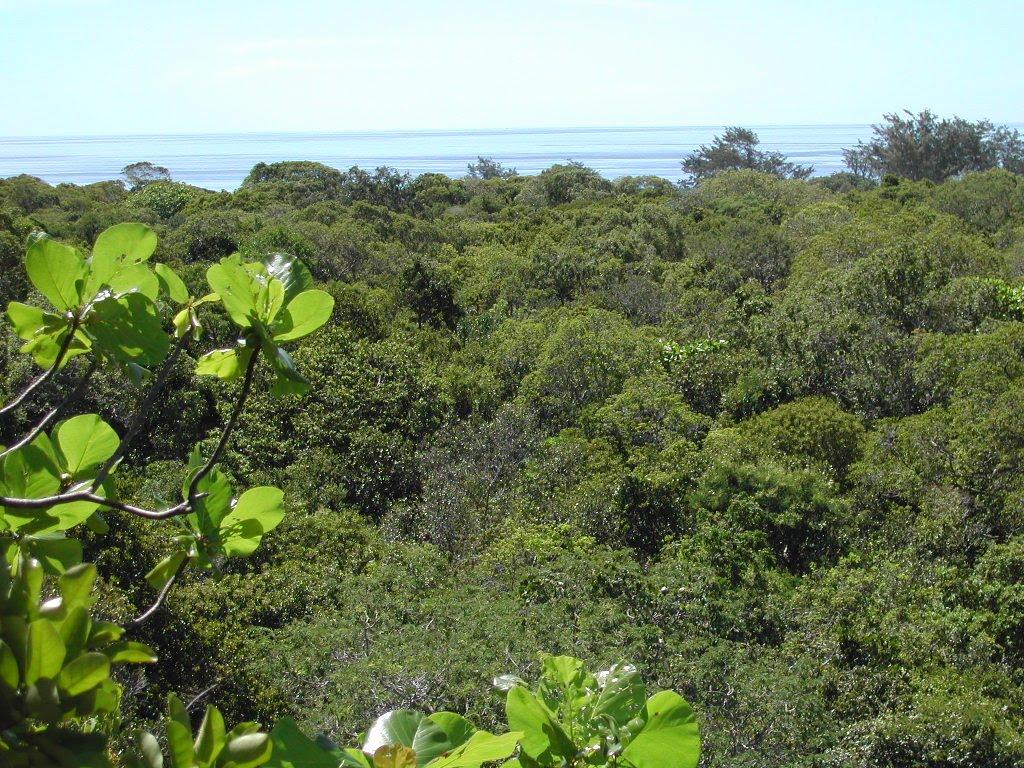
- Change in NEET rate, 2019 to 2024: +1.8 percentage points
- Share of youth not in education, employment or training, 2024: 29.1%
- Share of youth not in education, employment or training, 2019: 27.3%
- Unemployment among advanced degree holders: 2.3%
- Gross domestic product: $1.9 billion ($1,343 per capita)
- Largest urban areas: Dili, Lospalos, Maubisse, Likisá, Same, Maliana, Racolo, Baucau, Pante Macassar, Gleno
24. Ethiopia

- Change in NEET rate, 2019 to 2024: +1.8 percentage points
- Share of youth not in education, employment or training, 2024: 17.4%
- Share of youth not in education, employment or training, 2019: 15.6%
- Unemployment among advanced degree holders: 10.6%
- Gross domestic product: $126.8 billion ($1,011 per capita)
- Largest urban areas: Addis Ababa, Bahir Dar, Dire Dawa, Merawi, Kombolcha, Mota, Dessie, Jijiga, Hawassa, Kobo
23. Cameroon
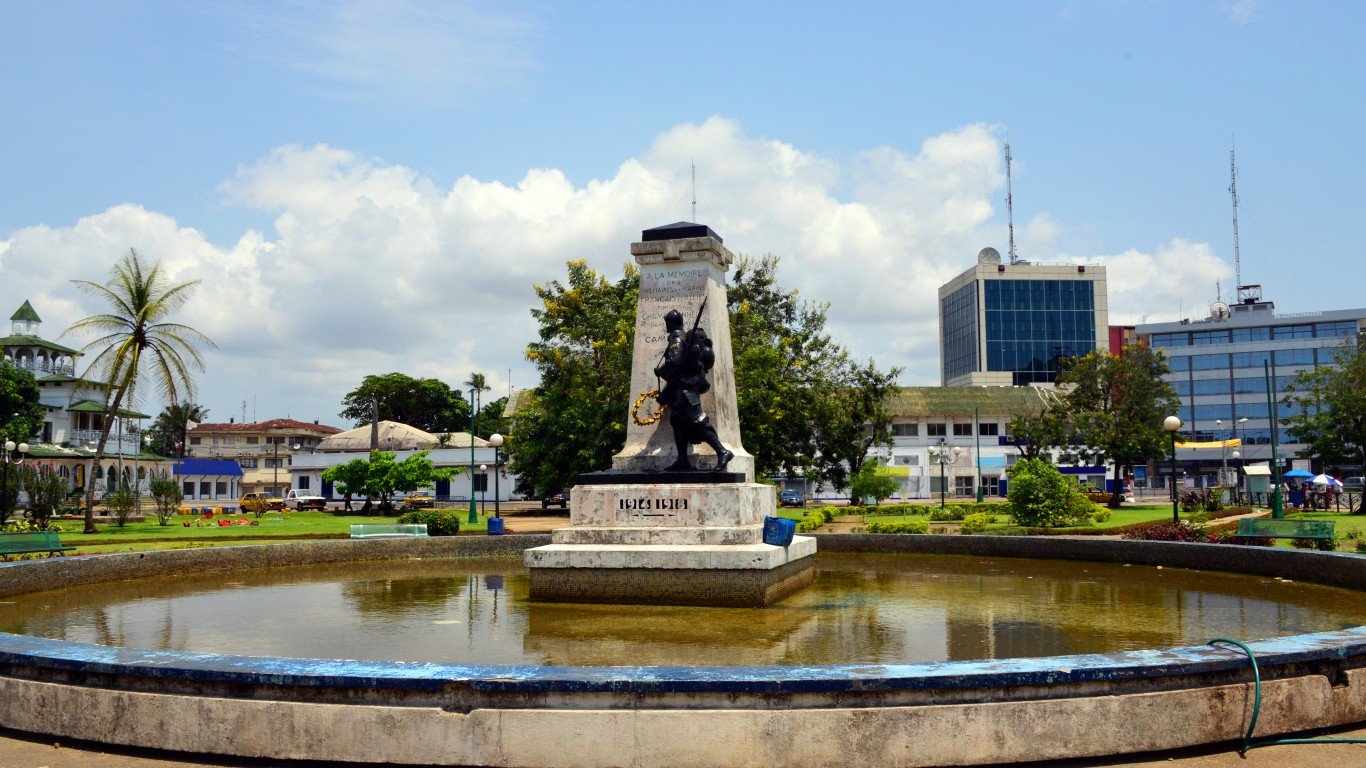
- Change in NEET rate, 2019 to 2024: +1.8 percentage points
- Share of youth not in education, employment or training, 2024: 23.1%
- Share of youth not in education, employment or training, 2019: 21.3%
- Unemployment among advanced degree holders: 18.8%
- Gross domestic product: $51.3 billion ($1,762 per capita)
- Largest urban areas: Yaounde, Douala, Maroua, Garoua, Mokolo, Bafoussam, Bamenda, Mbouda, Dschang, Yagoua
22. Germany

- Change in NEET rate, 2019 to 2024: +1.8 percentage points
- Share of youth not in education, employment or training, 2024: 7.4%
- Share of youth not in education, employment or training, 2019: 5.6%
- Unemployment among advanced degree holders: 2.1%
- Gross domestic product: $4.7 trillion ($55,800 per capita)
- Largest urban areas: Dortmund, Berlin, Hamburg, Cologne, Munich, Stuttgart, Frankfurt Am Main, Wuppertal, Dusseldorf, Hanover
21. Romania

- Change in NEET rate, 2019 to 2024: +1.9 percentage points
- Share of youth not in education, employment or training, 2024: 16.6%
- Share of youth not in education, employment or training, 2019: 14.7%
- Unemployment among advanced degree holders: 1.6%
- Gross domestic product: $382.8 billion ($20,072 per capita)
- Largest urban areas: Bucharest, Galați, Craiova, Iași, Cluj-Napoca, Constanța, Timișoara, Brasov, Ploiești
20. South Sudan

- Change in NEET rate, 2019 to 2024: +1.9 percentage points
- Share of youth not in education, employment or training, 2024: 33.6%
- Share of youth not in education, employment or training, 2019: 31.7%
- Unemployment among advanced degree holders: 6.4%
- Gross domestic product: $12.0 billion ($1,080 per capita)
- Largest urban areas: Malualkon, Aweil, Wau, Juba, Rumbek, Kuajok, Bor, Pieri, Alek, Yirol
19. Trinidad and Tobago
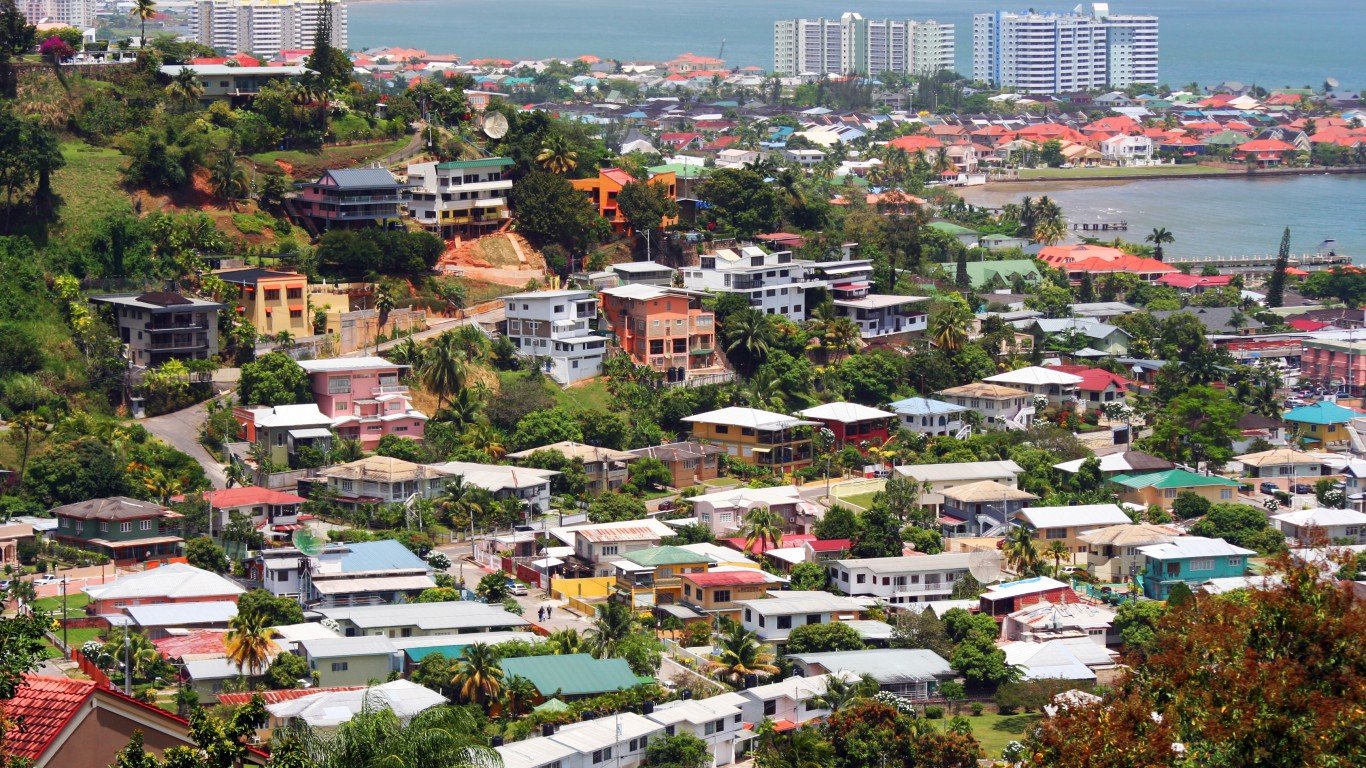
- Change in NEET rate, 2019 to 2024: +2.0 percentage points
- Share of youth not in education, employment or training, 2024: 16.6%
- Share of youth not in education, employment or training, 2019: 14.6%
- Unemployment among advanced degree holders: 2.6%
- Gross domestic product: $26.4 billion ($19,315 per capita)
- Largest urban areas: Port Of Spain, San Fernando, Arima, Debe, Chaguanas, Couva, Sangre Grande, Scarborough, Point Fortin, Princes Town
18. Austria

- Change in NEET rate, 2019 to 2024: +2.1 percentage points
- Share of youth not in education, employment or training, 2024: 13.1%
- Share of youth not in education, employment or training, 2019: 11.0%
- Unemployment among advanced degree holders: 3.6%
- Gross domestic product: $521.6 billion ($56,833 per capita)
- Largest urban areas: Vienna, Linz, Graz, Salzburg, Innsbruck, Klagenfurt, Wels, Steyr, Bregenz, Villach
17. Mauritius

- Change in NEET rate, 2019 to 2024: +2.3 percentage points
- Share of youth not in education, employment or training, 2024: 20.4%
- Share of youth not in education, employment or training, 2019: 18.1%
- Unemployment among advanced degree holders: 5.5%
- Gross domestic product: $15.0 billion ($11,872 per capita)
- Largest urban areas: Port Louis, Rose Belle, Goodlands, Triolet, Mahébourg, Moka, Central Flacq, Chamouny, Bon Accueil, Grand Baie
16. Saudi Arabia

- Change in NEET rate, 2019 to 2024: +2.3 percentage points
- Share of youth not in education, employment or training, 2024: 17.9%
- Share of youth not in education, employment or training, 2019: 15.6%
- Unemployment among advanced degree holders: 5.9%
- Gross domestic product: $1.2 trillion ($35,057 per capita)
- Largest urban areas: Riyadh, Jeddah, Dammam, Mecca, Medina, Hofuf, Khamis Mushait, Tabuk, At Taif, Al Khobar
15. Burundi
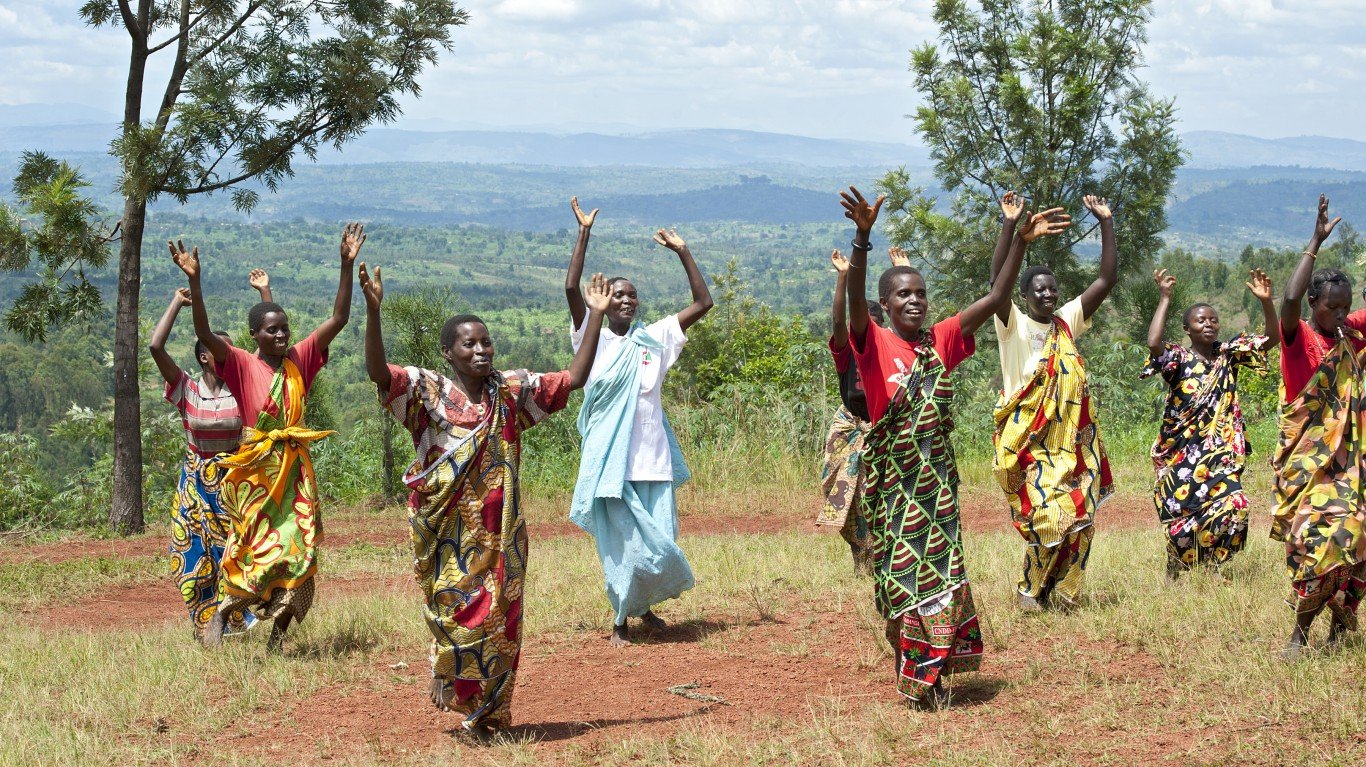
- Change in NEET rate, 2019 to 2024: +2.6 percentage points
- Share of youth not in education, employment or training, 2024: 12.6%
- Share of youth not in education, employment or training, 2019: 10.0%
- Unemployment among advanced degree holders: 9.2%
- Gross domestic product: $2.2 billion ($154 per capita)
- Largest urban areas: Rurama, Bujumbura, Kibaya, Buhiga, Nyamurenza, Makamba, Bubanza, Musigati, Marangara, Mutoyi
14. Montenegro

- Change in NEET rate, 2019 to 2024: +2.6 percentage points
- Share of youth not in education, employment or training, 2024: 20.0%
- Share of youth not in education, employment or training, 2019: 17.3%
- Unemployment among advanced degree holders: 11.8%
- Gross domestic product: $8.1 billion ($12,935 per capita)
- Largest urban areas: Bijelo Polje, Podgorica, Niksic, Pljevlja, Berane, Bar, Herceg Novi, Rožaje, Cetinje, Ulcinj
13. Ghana
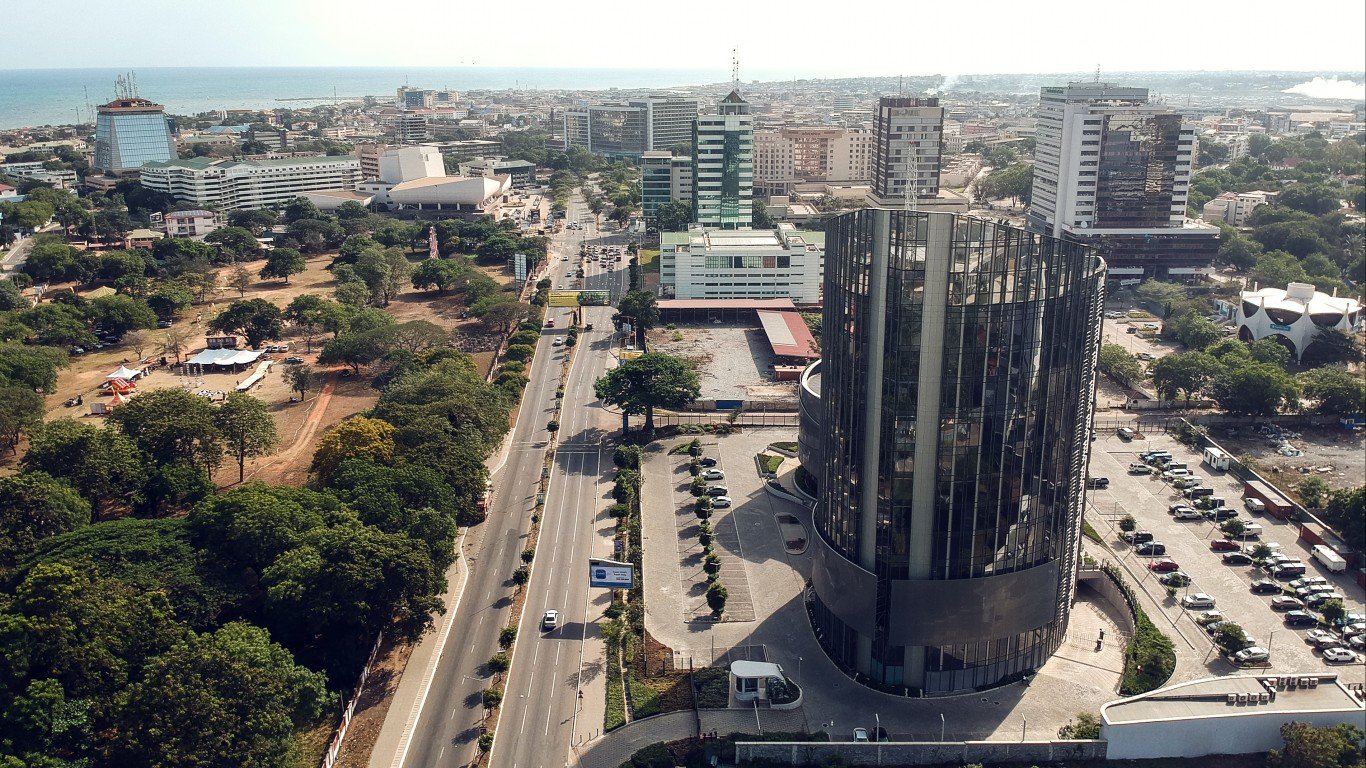
- Change in NEET rate, 2019 to 2024: +2.7 percentage points
- Share of youth not in education, employment or training, 2024: 27.6%
- Share of youth not in education, employment or training, 2019: 24.9%
- Unemployment among advanced degree holders: 5.1%
- Gross domestic product: $82.8 billion ($2,406 per capita)
- Largest urban areas: Accra, Kumasi, Obuasi, Tamale, Somanya, Bawku, Takoradi, Bolgatanga, Sunyani, Suhum
12. Togo

- Change in NEET rate, 2019 to 2024: +2.9 percentage points
- Share of youth not in education, employment or training, 2024: 13.3%
- Share of youth not in education, employment or training, 2019: 10.4%
- Unemployment among advanced degree holders: 7.1%
- Gross domestic product: $9.9 billion ($1,043 per capita)
- Largest urban areas: Lomé, Kara, Sokodé, Bassar, Niamtougou, Kpalimé, Blitta-Gare, Atakpamé, Dapaong, Sansanné-Mango
11. Sudan

- Change in NEET rate, 2019 to 2024: +3.1 percentage points
- Share of youth not in education, employment or training, 2024: 47.0%
- Share of youth not in education, employment or training, 2019: 43.8%
- Unemployment among advanced degree holders: 22.4%
- Gross domestic product: $49.9 billion ($989 per capita)
- Largest urban areas: Khartoum, Al Managil, Geneina, Wad Madanī, Al-Ubayyid, Kosti, Al-Qadarif, Umm Ruwaba, Nyala, Dilling
10. Costa Rica

- Change in NEET rate, 2019 to 2024: +3.2 percentage points
- Share of youth not in education, employment or training, 2024: 20.8%
- Share of youth not in education, employment or training, 2019: 17.6%
- Unemployment among advanced degree holders: 5.2%
- Gross domestic product: $95.4 billion ($18,587 per capita)
- Largest urban areas: San José, Cartago, Limón, Barranca, San Isidro De El General, Siquirres, San Ramón, Turrialba, Ciudad Quesada, Grecia
9. Honduras
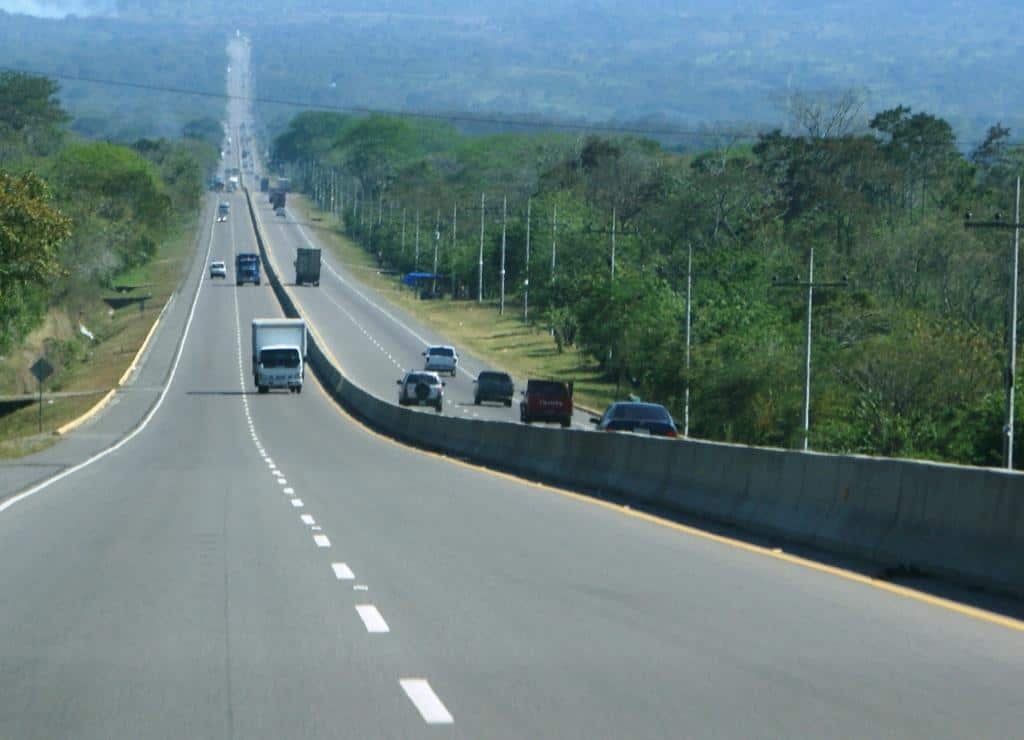
- Change in NEET rate, 2019 to 2024: +3.5 percentage points
- Share of youth not in education, employment or training, 2024: 30.3%
- Share of youth not in education, employment or training, 2019: 26.8%
- Unemployment among advanced degree holders: 8.5%
- Gross domestic product: $37.1 billion ($3,426 per capita)
- Largest urban areas: Tegucigalpa, San Pedro Sula, Choluteca, El Progreso, La Ceiba, Puerto Cortés, Danli, Comayagua, Pespire
8. Luxembourg

- Change in NEET rate, 2019 to 2024: +4.0 percentage points
- Share of youth not in education, employment or training, 2024: 8.8%
- Share of youth not in education, employment or training, 2019: 4.8%
- Unemployment among advanced degree holders: 3.9%
- Gross domestic product: $93.2 billion ($137,517 per capita)
- Largest urban areas: Luxembourg, Esch-Sur-Alzette, Differdange, Ettelbruck, Aubange, Dudelange, Diekirch, Grevenmacher, Huncherange, Prettingen
7. Saint Lucia

- Change in NEET rate, 2019 to 2024: +4.1 percentage points
- Share of youth not in education, employment or training, 2024: 34.4%
- Share of youth not in education, employment or training, 2019: 30.3%
- Unemployment among advanced degree holders: 6.3%
- Gross domestic product: $2.5 billion ($14,182 per capita)
- Largest urban areas: Castries, Laborie, Micoud, Monkey Town, Dennery, Gros Islet, Soufriere
6. Pakistan

- Change in NEET rate, 2019 to 2024: +4.3 percentage points
- Share of youth not in education, employment or training, 2024: 34.0%
- Share of youth not in education, employment or training, 2019: 29.7%
- Unemployment among advanced degree holders: 16.1%
- Gross domestic product: $373.1 billion ($1,485 per capita)
- Largest urban areas: Karachi, Lahore, Faisalabad, Rawalpindi, Gujranwala, Multan, Peshawar, Hyderabad, Sialkot, Quetta
5. Botswana

- Change in NEET rate, 2019 to 2024: +5.6 percentage points
- Share of youth not in education, employment or training, 2024: 37.6%
- Share of youth not in education, employment or training, 2019: 32.0%
- Unemployment among advanced degree holders: 15.8%
- Gross domestic product: $19.4 billion ($7,695 per capita)
- Largest urban areas: Gaborone, Lobatse, Kanye, Mahalapye, Francistown, Selebi Phikwe, Palapye, Mmopane, Maun
4. Peru
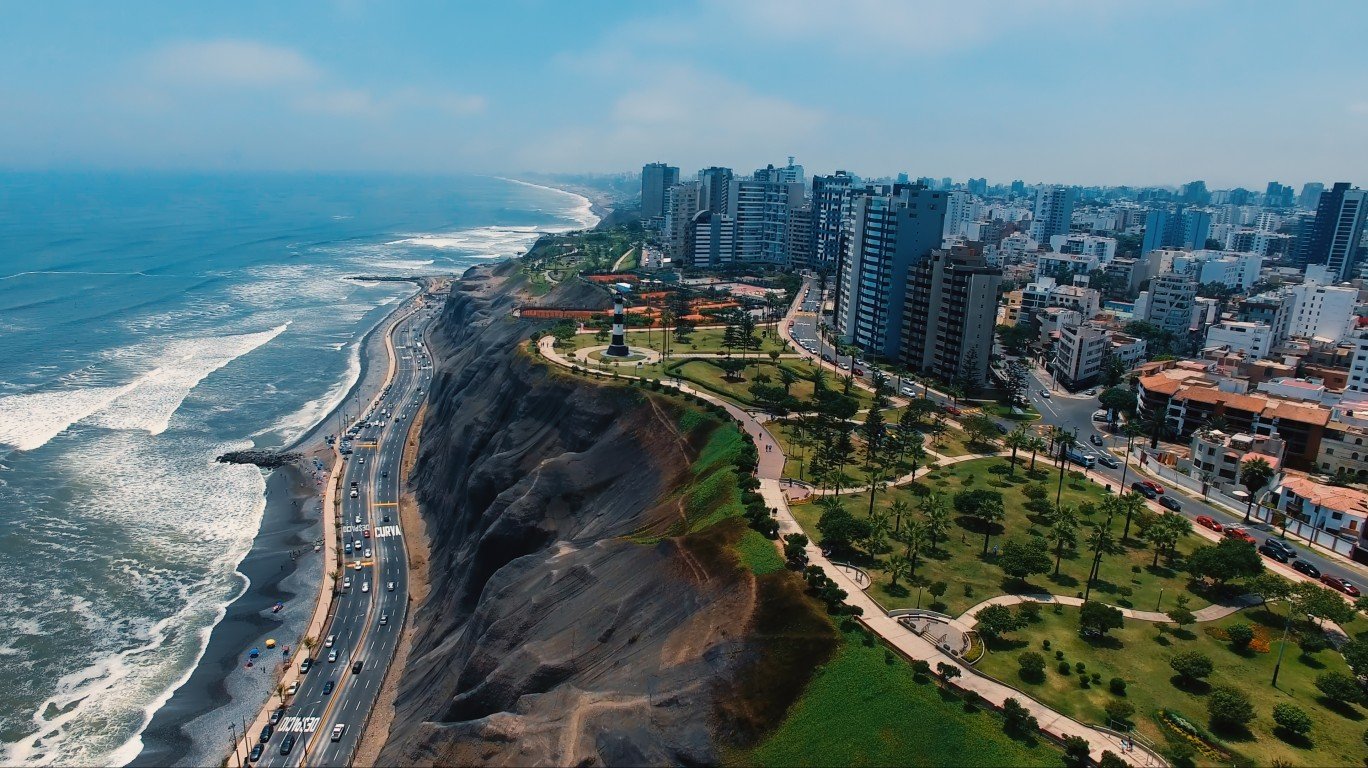
- Change in NEET rate, 2019 to 2024: +6.7 percentage points
- Share of youth not in education, employment or training, 2024: 23.6%
- Share of youth not in education, employment or training, 2019: 16.9%
- Unemployment among advanced degree holders: 5.3%
- Gross domestic product: $289.2 billion ($8,452 per capita)
- Largest urban areas: Lima, Arequipa, Trujillo, Chiclayo, Chimbote, Cusco, Huancayo, Piura, Pucallpa, Sullana
3. The Gambia

- Change in NEET rate, 2019 to 2024: +8.3 percentage points
- Share of youth not in education, employment or training, 2024: 39.7%
- Share of youth not in education, employment or training, 2019: 31.4%
- Unemployment among advanced degree holders: 10.7%
- Gross domestic product: $2.5 billion ($909 per capita)
- Largest urban areas: Serrekunda, Banjul, Bansang, Farafenni, Basse Santa Su, Brikama, Barra, Soma, Kerr Cosa, Dankunku
2. Bhutan

- Change in NEET rate, 2019 to 2024: +9.2 percentage points
- Share of youth not in education, employment or training, 2024: 19.6%
- Share of youth not in education, employment or training, 2019: 10.4%
- Unemployment among advanced degree holders: 9.3%
- Gross domestic product: $3.0 billion ($3,839 per capita)
- Largest urban areas: Nk Darranga, Pasakha, Chang Bangdu, Samtse
1. Afghanistan
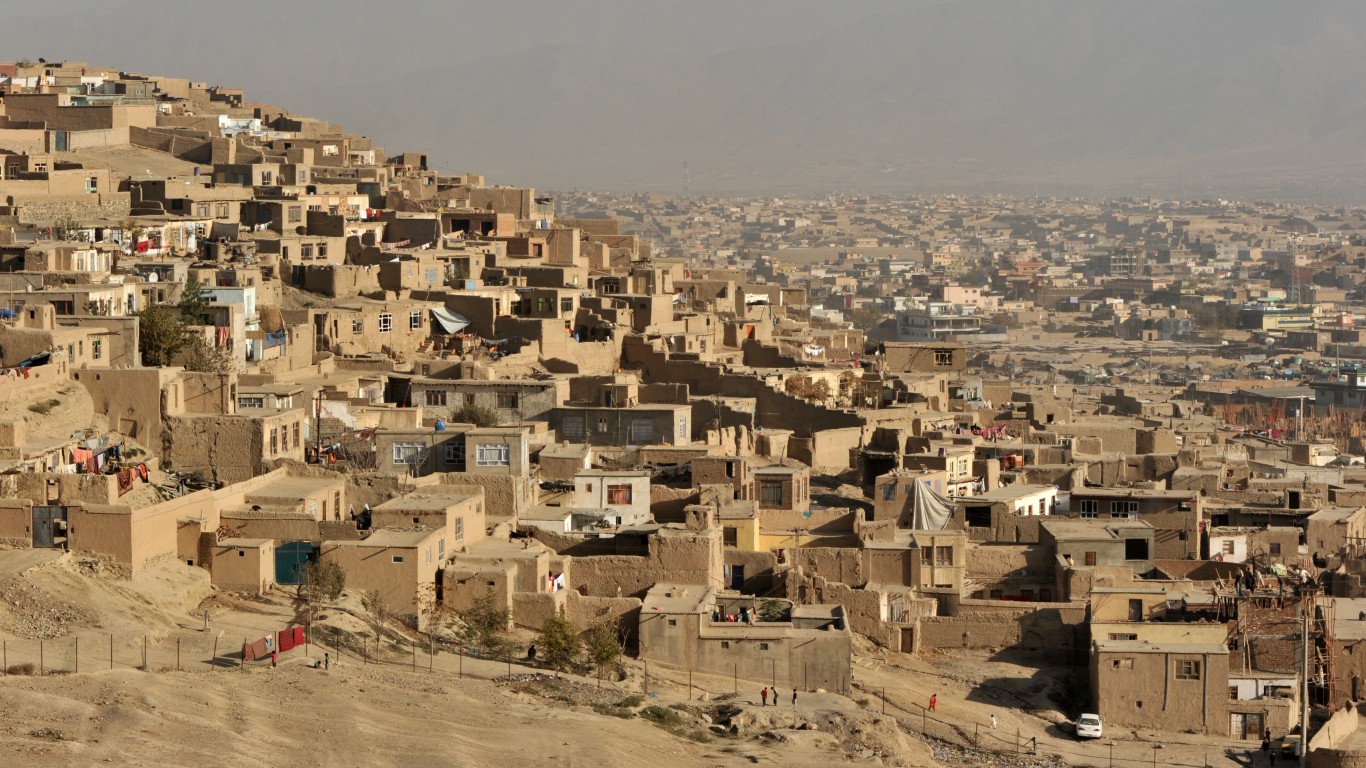
- Change in NEET rate, 2019 to 2024: +12.7 percentage points
- Share of youth not in education, employment or training, 2024: 55.4%
- Share of youth not in education, employment or training, 2019: 42.6%
- Unemployment among advanced degree holders: 9.8%
- Gross domestic product: $17.2 billion ($414 per capita)
- Largest urban areas: Kabul, Ghazni, Mazar I Sharif, Kandahar, Herat, Chaman, Kunduz
The post Rising NEET Rates And The Countries Where Gen Z Is Being Left Behind appeared first on 24/7 Wall St..
Click this link for the original source of this article.
Author: Evan Comen
This content is courtesy of, and owned and copyrighted by, https://247wallst.com and its author. This content is made available by use of the public RSS feed offered by the host site and is used for educational purposes only. If you are the author or represent the host site and would like this content removed now and in the future, please contact USSANews.com using the email address in the Contact page found in the website menu.





